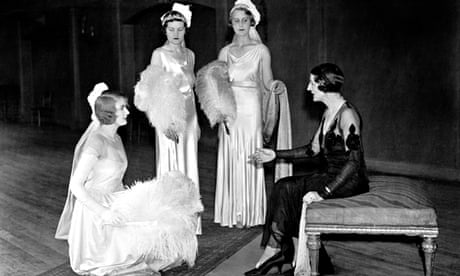Josephine Bradley, first lady of the ballroom, never revealed her age – she once half-considered suing a German magazine that got it a few years out – until she was persuaded what an excellent advertisement it made for ballroom dancing. When the secret of her age came out earlier this month, a dinner of the Imperial Society of Teachers of Dancing turned into a champagne celebration in her honour, and a party on Thursday, her 90th birthday, at her Kensington ballroom studio is likely to turn into a sort of This Is My Dancing Life. Miss Bradley, after all, personifies the history of ballroom dancing.
She is the only one still alive of the five leading teachers who, in 1924, set out to codify the style of dancing they had helped to create. The basic technique, taken up by teachers throughout the world, is unchanged today. It is the root of all ballroom dancing, as the five positions are the base of all classical ballet. The "standard four" dances with which they were concerned were the Waltz, the Foxtrot, the Tango and the newly devised Quickstep which satisfied the taste of dancers seeking a new, faster rhythm following the Charleston craze.
Miss Bradley's first connection with dancing came through playing the piano at ballet lessons for children of the well-to-do in Chorley Wood. She took some lessons herself, taught some of the children (among them Daphne du Maurier) and went to London to study with the celebrated Madame Vandyck.
This was the era, the closing years of the 1914-1918 war, when night life was at its height. Jo remembers "men in thrilling, blue dress uniforms, women in full evening dress; restaurants and clubs brilliantly lighted; jazz bands blaring the popular tunes of the moment, such as If You Were The Only Girl In The World and Alexander's Ragtime Band." She caught her first glimpse of the Foxtrot, tried it and found "I could do this walk and trot." She realised she was a ballroom dancer by instinct.
To the Americans, she gives all credit for the discovery of new rhythms which inspire new dances, for instance the jitterbug which led to the jive; it is the English teachers who shape and refine them.
She has a new plan which she is determined to see through. "I have time on my hands," she says, for she now delegates a lot of teaching. She is determined to set up a house where retired dancers and dance teachers may live in comfort and in the company of people who "speak the same language". She believes that if you want to get something done, you should ask a woman to do it. Do it she most certainly will.







Comments (…)
Sign in or create your Guardian account to join the discussion